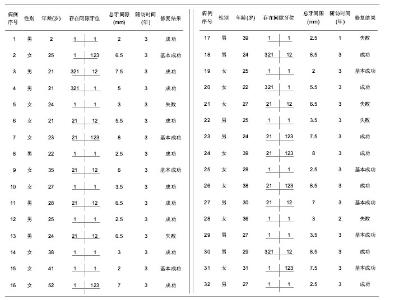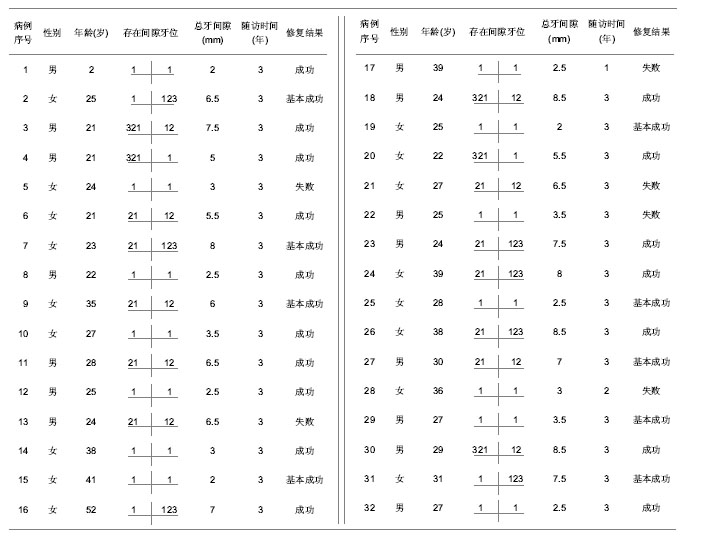| [1] 徐君伍.口腔修复学[M].3版.北京:人民卫生出版社,1994: 152-156.
[2] 赵立群.复合树脂攻纹钉修复前牙牙体缺损远期疗效评价[J].上海铁道大学学报:医学版,1996,10(4):290-291.
[3] YY/T 0113-1993,牙科复合树脂耐磨耗性能测试方法[S].北京:中国标准出版社,2002.
[4] 许美莲,王宝春,马洪学,等.前牙光固化树脂修复的固位方法及临床效果观察[J].口腔颌面修复学杂志,2005,1(6):57.
[5] 李伟林,李金业.银汞合金与光固化树脂充填后牙类Ⅱ洞的对比分析[J].中国社区医师:医学专业,2013,15(1):158.
[6] 桑金华.P60复合树脂充填后牙Ⅱ类洞的临床观察[J].实用全科医学,2007,5(3): 214-215.
[7] 吴昱卓,徐建萍,周艳,等.瓷化树脂、复合树脂及银汞合金充填后牙Ⅱ类洞疗效观察[J].交通医学, 2006,20(4):456,458.
[8] 马金骥,冯伟华,王国利.银汞合金粘结修复后牙Ⅱ类洞的临床观察[J].广东牙病防治, 2004,12(3):211-212.
[9] 黄玮.嵌体与银汞合金在后牙Ⅱ类洞修复中的临床观察[J].实用临床医学, 2002,3(3):33-34.
[10] 蒋立柱.嵌体与银汞合金修复材料在后牙Ⅱ类洞治疗中的效果评价[J].中国组织工程研究与临床康复,2007,11(40): 8184- 8185.
[11] 李瑶,徐静舒.Z350纳米复合树脂充填后牙Ⅱ类洞的临床疗效观察[J].现代保健•医学创新研究,2007,4(36):30-31.
[12] 葛荣富.间接树脂嵌体修复后牙Ⅱ类洞缺损的临床评价[J].口腔医学, 2010,30(9):569-570.
[13] 李玉兰.复合树脂修复后牙Ⅱ类洞疗效观察[J].右江民族医学院学报, 2005,27(3):352-353.
[14] 司熙,文少敏,吴世超,等.三种修复体对牙龈影响的比较分析[J].吉林医学, 2010,31(31):5520-5521.
[15] 王秀梅,王红.光固化树脂和银汞合金在后牙修复中的联合应用[J].黑龙江医学, 2002,26(10):773.
[16] Roeters JJM,Shortall ACC,Opdam NJM.Can a single composite resin serve all purpose. Brit Dent J. 2005;199(2): 73-79.
[17] Wakefield CW,Kofford KR.Advances in Restorative Material.Dent Clin North Am. 2001;45(1):7-29.
[18] Manhart J,Garcia-Godoy F,Hickel R. Direct posterior restorations:clinical results and new developments.Dent Clin North Am.2002;46(2):303-339.
[19] 王道欣.3M纳米树脂在前牙美容修复中的临床研究[J].中国医药科学,2012,2(15):180.
[20] 李志强,聂红兵,周海静.光固化树脂在成人上前牙修复关闭间隙的疗效观察.宁夏医学杂志,2003,25(8):499-499.
[21] 张焕发.光固化复合树脂修复牙体缺损132例疗效观察[J].中国民康医学,2013,25(8):42-43.
[22] 朱振亚.光固化复合树脂修复126颗牙体缺损的疗效分析[J].蚌埠医学院学报,2011,36(12):1366-1368.
[23] 李丽华,陈穗保,吴洋,等.多色光固化复合树脂关闭上前牙间隙的美学效果评价[J].中国美容医学,2012,21(1): 123-124.
[24] 夏舜玲.用光固化复合树脂行前牙美容修复[J].湖南医学,1999, 16(5):381.
[25] 董红,饶贞慧,胡德良.光固化复合树脂修复前牙过宽间隙84例临床观察[J].郧阳医学院学报,2000,19(4):242-243. |

